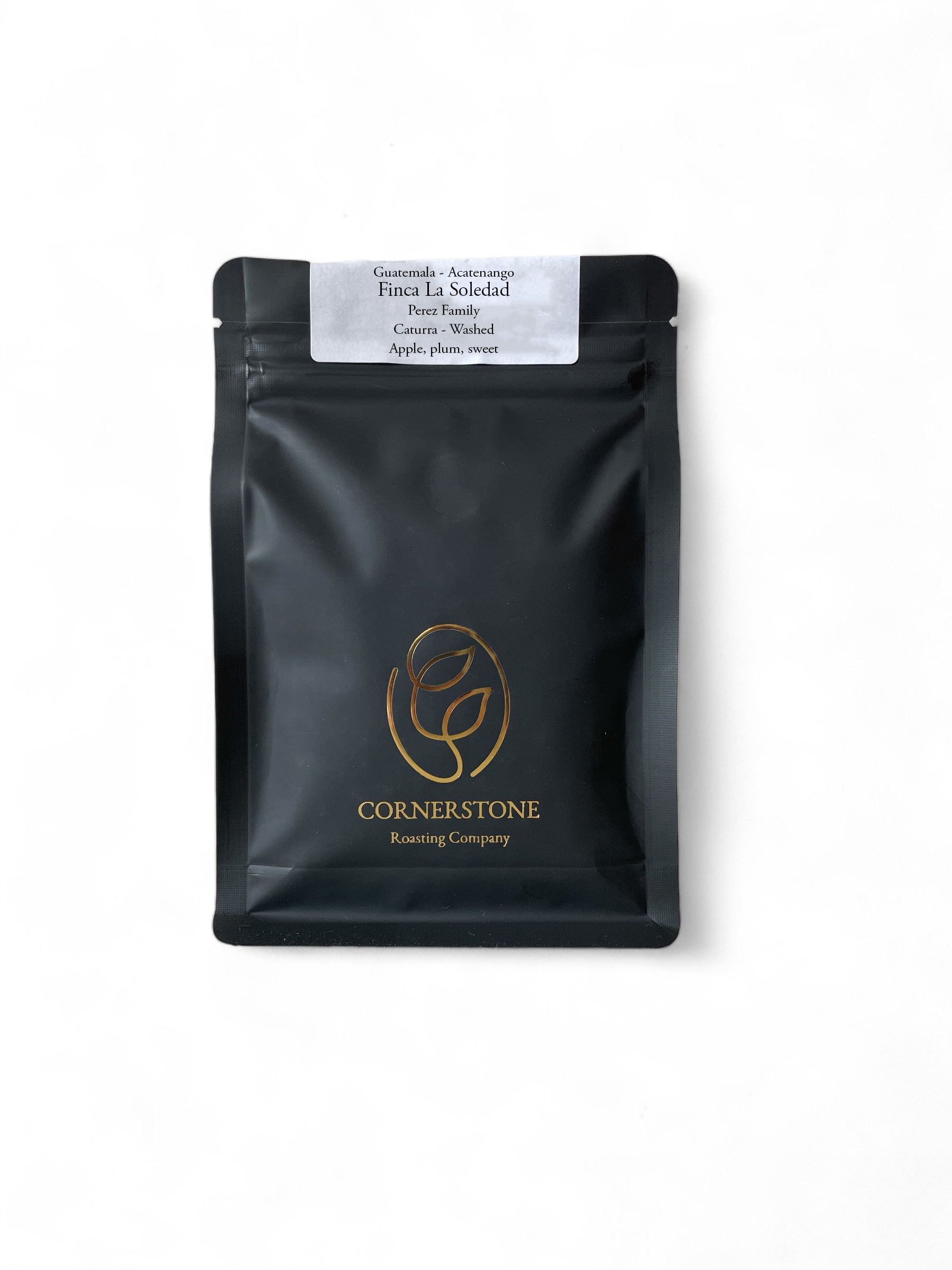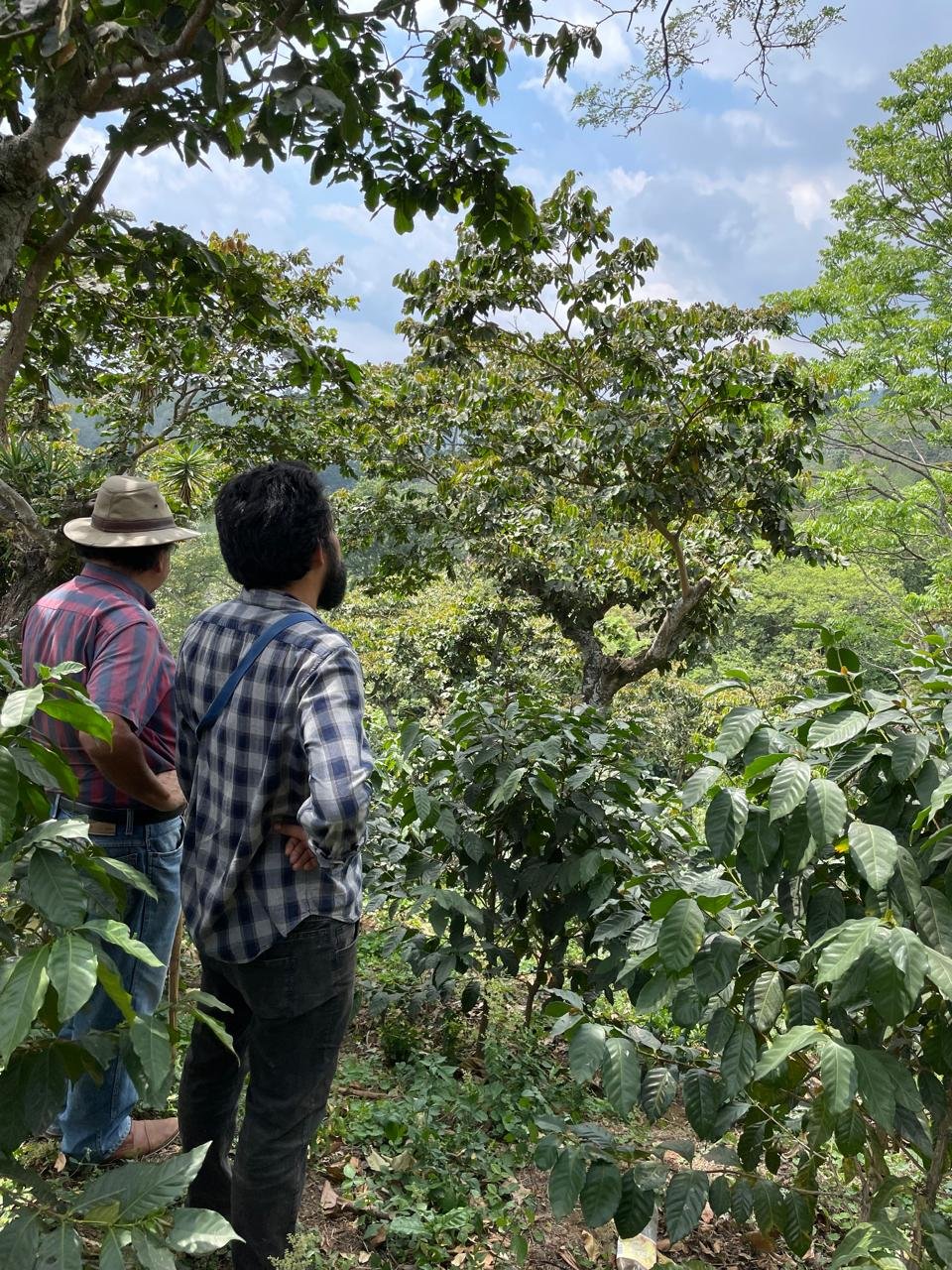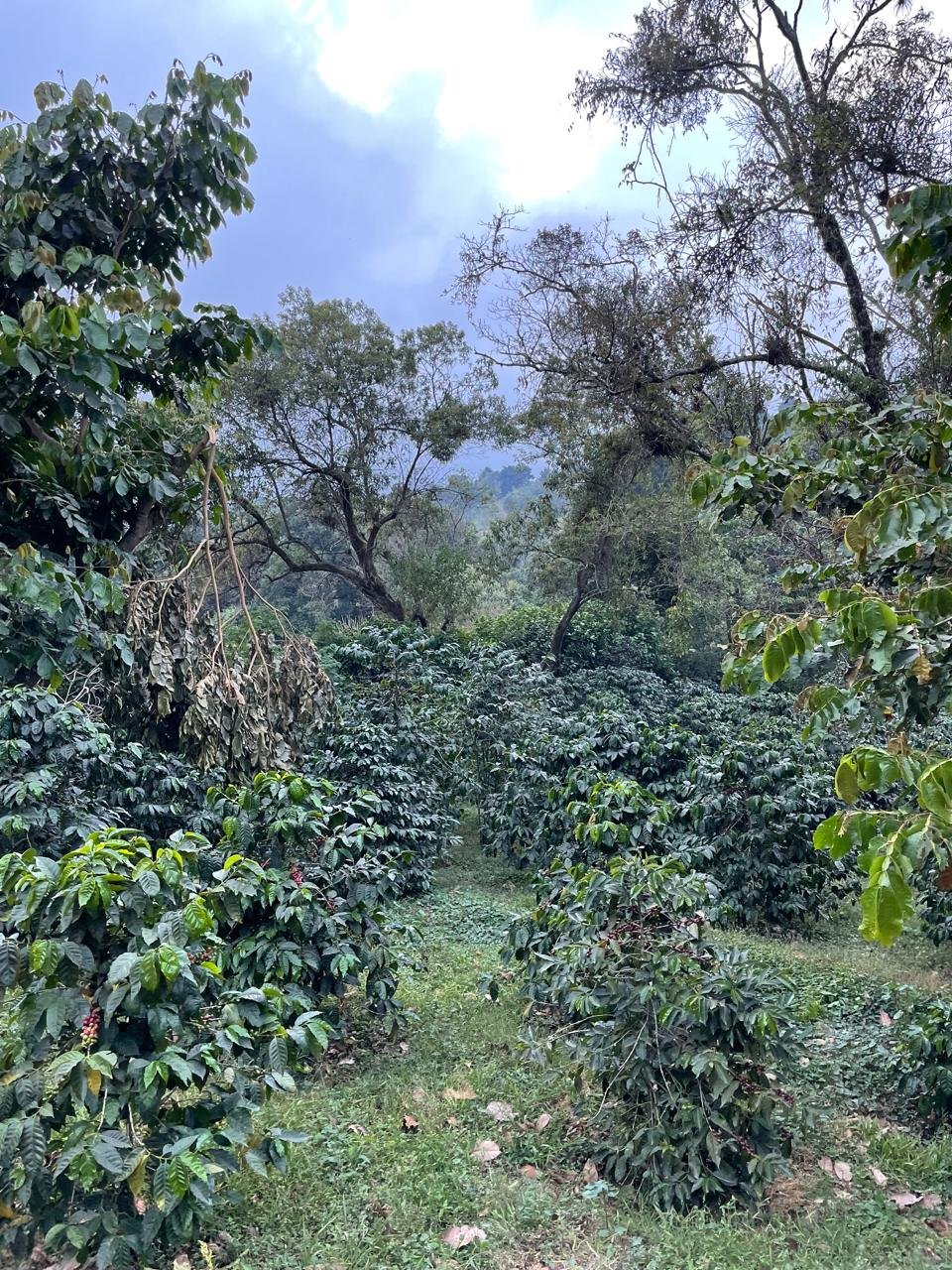Finca La Soledad - Tasting set
La Soledad has been experimenting not only with coffee processing but also coffee varieties. They have been working closely and conducting research with WORLD COFFEE RESEARCH and testing new varieties and conditions for coffee hybrids focusing on resistance, quality and higher productivity.
The farm covers 90ha and from that 45ha forms coffee plantation and the rest is kept as natural forest preserve.
We have met Raul from Finca La Soledad this summer during the World of Coffee in Copenhagen.
During a talk with other coffee farmers, Raul asked if they would be ready to replace most of their tree with geisha. The answer was « hell no » with a 100% rate. Geisha is a low yield, very sensible varietal, on which farmers tent to not be profitable. But, because of geisha’s « better », more complex flavors, it is highly prized by the consumer end of the specialty coffee industry.
To illustrate this topics, we have selected 2 lots for his farm:
Lot El Plano:
A geisha cultivated around 1625 masl. This is the first geisha parcel they planted in La Soledad and has 24 year old trees. Geisha from this parcel placed top 10 of the cup of excellence 3 times over the past 8 years.
Worm compost, mineral fertilizer, seaweed and humic acid is applied to the soil on this parcel. No insecticides and no fungicides are used.
The cherries were hand picked late February then dry fermented after pulping for 75h, then washed by double rinse and dried on raised beds for 19 days.
Lot San Jose:
A caturra cultivated around 1550 masl. The parcel has some coffee trees that are over 40 years old! Worm compost, mineral fertilizer, seaweed and humic acid is used on this parcel. No insecticides are used but some fungicides were necessary to help against coffee rust and other fungus infection.
The cherries were hand picked then dry fermented after pulping for 46h, then washed and dried on raised beds for 17 days. This lot was harvested and processed during January/February.
The objective of selecting those two lots is to tasting them one next to another. Understanding that one can not be without the other.
This is for 2 reasons:
- From a taste perspective:
Exceptional coffee is only exceptional if it is put on this pedestal by more « regular » coffee. If only exceptional coffee is consumed, then it is by definition not exceptional anymore.
- From an economical perspective:
Exceptional coffee can only exist together with higher yielding, more resistant coffee varieties. Those varieties allow coffee farmers to turn a profit and thus keep producing coffee, including low yield, highly enjoyed and demanded varieties.
Tasting recommandations:
Please wait a minimum of 3 week after roast before tasting those coffee. For the best comparison, for the first brew, it would be best to cup them side by side, or to brew them side by side with the same recipe. We recommend 12g of coffee for 200g of water. Then, you might want to try adjusting each recipe to extract each coffee’s attribute the best, and compare again, with different recipe.
The tasting set is comprised of 100g of each coffee.
La Soledad has been experimenting not only with coffee processing but also coffee varieties. They have been working closely and conducting research with WORLD COFFEE RESEARCH and testing new varieties and conditions for coffee hybrids focusing on resistance, quality and higher productivity.
The farm covers 90ha and from that 45ha forms coffee plantation and the rest is kept as natural forest preserve.
We have met Raul from Finca La Soledad this summer during the World of Coffee in Copenhagen.
During a talk with other coffee farmers, Raul asked if they would be ready to replace most of their tree with geisha. The answer was « hell no » with a 100% rate. Geisha is a low yield, very sensible varietal, on which farmers tent to not be profitable. But, because of geisha’s « better », more complex flavors, it is highly prized by the consumer end of the specialty coffee industry.
To illustrate this topics, we have selected 2 lots for his farm:
Lot El Plano:
A geisha cultivated around 1625 masl. This is the first geisha parcel they planted in La Soledad and has 24 year old trees. Geisha from this parcel placed top 10 of the cup of excellence 3 times over the past 8 years.
Worm compost, mineral fertilizer, seaweed and humic acid is applied to the soil on this parcel. No insecticides and no fungicides are used.
The cherries were hand picked late February then dry fermented after pulping for 75h, then washed by double rinse and dried on raised beds for 19 days.
Lot San Jose:
A caturra cultivated around 1550 masl. The parcel has some coffee trees that are over 40 years old! Worm compost, mineral fertilizer, seaweed and humic acid is used on this parcel. No insecticides are used but some fungicides were necessary to help against coffee rust and other fungus infection.
The cherries were hand picked then dry fermented after pulping for 46h, then washed and dried on raised beds for 17 days. This lot was harvested and processed during January/February.
The objective of selecting those two lots is to tasting them one next to another. Understanding that one can not be without the other.
This is for 2 reasons:
- From a taste perspective:
Exceptional coffee is only exceptional if it is put on this pedestal by more « regular » coffee. If only exceptional coffee is consumed, then it is by definition not exceptional anymore.
- From an economical perspective:
Exceptional coffee can only exist together with higher yielding, more resistant coffee varieties. Those varieties allow coffee farmers to turn a profit and thus keep producing coffee, including low yield, highly enjoyed and demanded varieties.
Tasting recommandations:
Please wait a minimum of 3 week after roast before tasting those coffee. For the best comparison, for the first brew, it would be best to cup them side by side, or to brew them side by side with the same recipe. We recommend 12g of coffee for 200g of water. Then, you might want to try adjusting each recipe to extract each coffee’s attribute the best, and compare again, with different recipe.
The tasting set is comprised of 100g of each coffee.
La Soledad has been experimenting not only with coffee processing but also coffee varieties. They have been working closely and conducting research with WORLD COFFEE RESEARCH and testing new varieties and conditions for coffee hybrids focusing on resistance, quality and higher productivity.
The farm covers 90ha and from that 45ha forms coffee plantation and the rest is kept as natural forest preserve.
We have met Raul from Finca La Soledad this summer during the World of Coffee in Copenhagen.
During a talk with other coffee farmers, Raul asked if they would be ready to replace most of their tree with geisha. The answer was « hell no » with a 100% rate. Geisha is a low yield, very sensible varietal, on which farmers tent to not be profitable. But, because of geisha’s « better », more complex flavors, it is highly prized by the consumer end of the specialty coffee industry.
To illustrate this topics, we have selected 2 lots for his farm:
Lot El Plano:
A geisha cultivated around 1625 masl. This is the first geisha parcel they planted in La Soledad and has 24 year old trees. Geisha from this parcel placed top 10 of the cup of excellence 3 times over the past 8 years.
Worm compost, mineral fertilizer, seaweed and humic acid is applied to the soil on this parcel. No insecticides and no fungicides are used.
The cherries were hand picked late February then dry fermented after pulping for 75h, then washed by double rinse and dried on raised beds for 19 days.
Lot San Jose:
A caturra cultivated around 1550 masl. The parcel has some coffee trees that are over 40 years old! Worm compost, mineral fertilizer, seaweed and humic acid is used on this parcel. No insecticides are used but some fungicides were necessary to help against coffee rust and other fungus infection.
The cherries were hand picked then dry fermented after pulping for 46h, then washed and dried on raised beds for 17 days. This lot was harvested and processed during January/February.
The objective of selecting those two lots is to tasting them one next to another. Understanding that one can not be without the other.
This is for 2 reasons:
- From a taste perspective:
Exceptional coffee is only exceptional if it is put on this pedestal by more « regular » coffee. If only exceptional coffee is consumed, then it is by definition not exceptional anymore.
- From an economical perspective:
Exceptional coffee can only exist together with higher yielding, more resistant coffee varieties. Those varieties allow coffee farmers to turn a profit and thus keep producing coffee, including low yield, highly enjoyed and demanded varieties.
Tasting recommandations:
Please wait a minimum of 3 week after roast before tasting those coffee. For the best comparison, for the first brew, it would be best to cup them side by side, or to brew them side by side with the same recipe. We recommend 12g of coffee for 200g of water. Then, you might want to try adjusting each recipe to extract each coffee’s attribute the best, and compare again, with different recipe.
The tasting set is comprised of 100g of each coffee.




